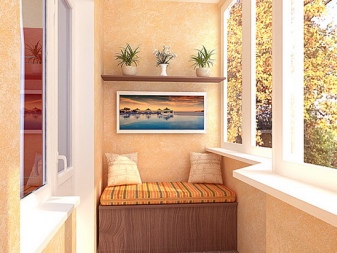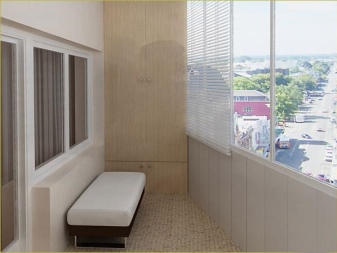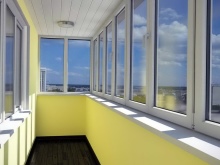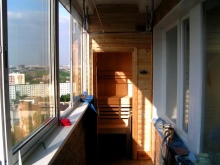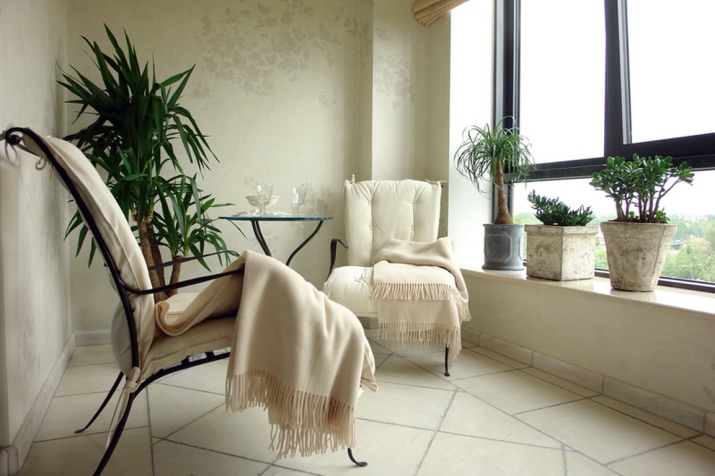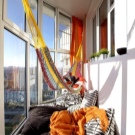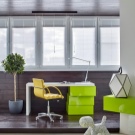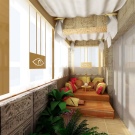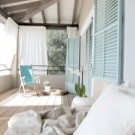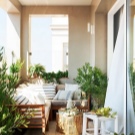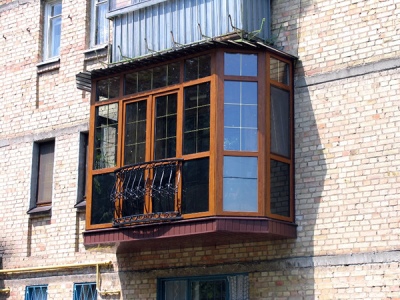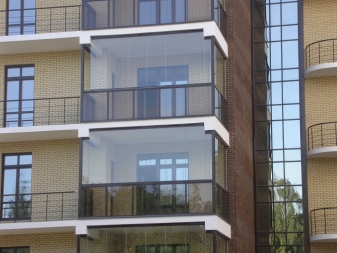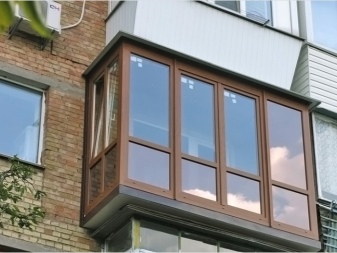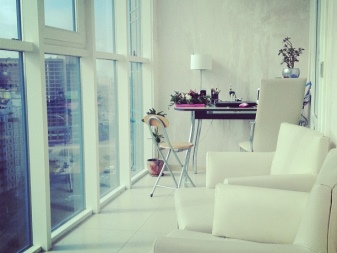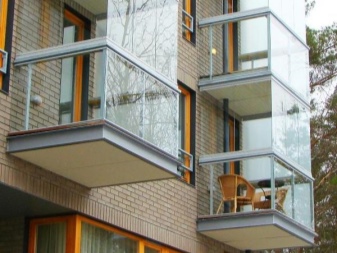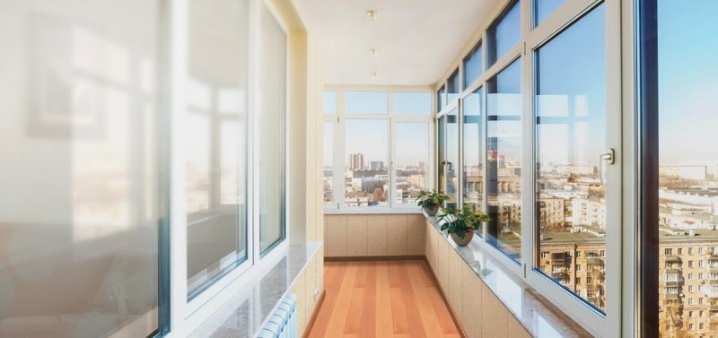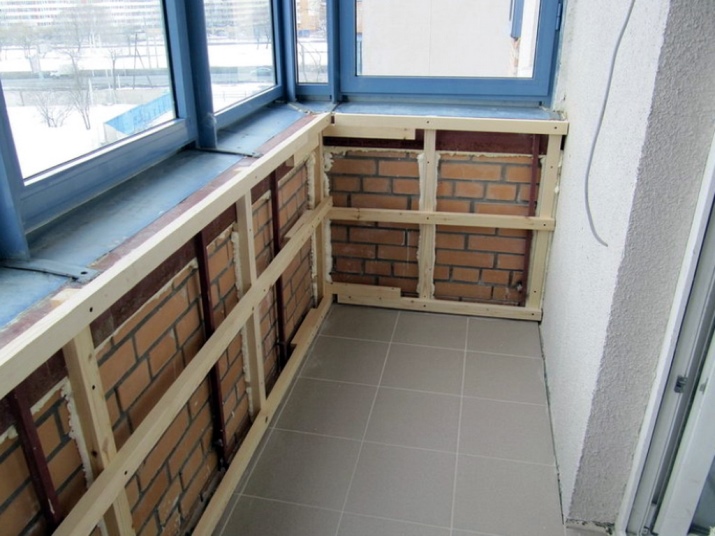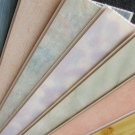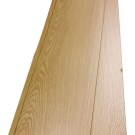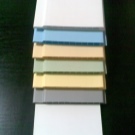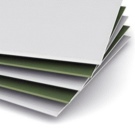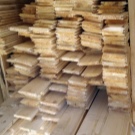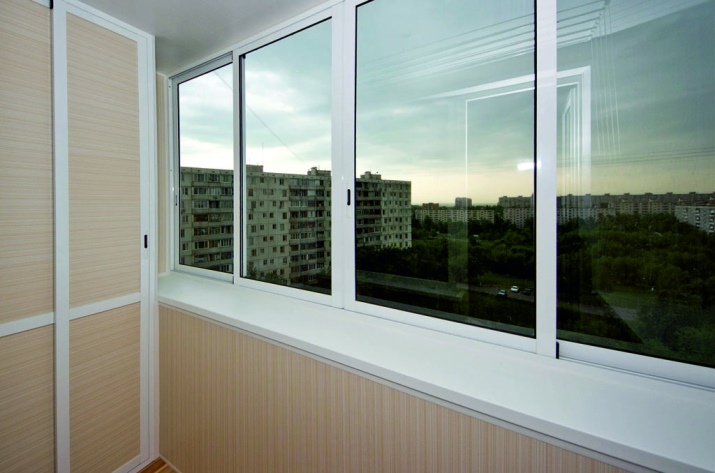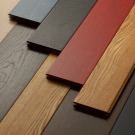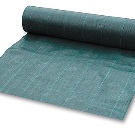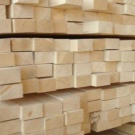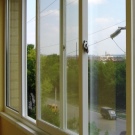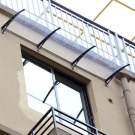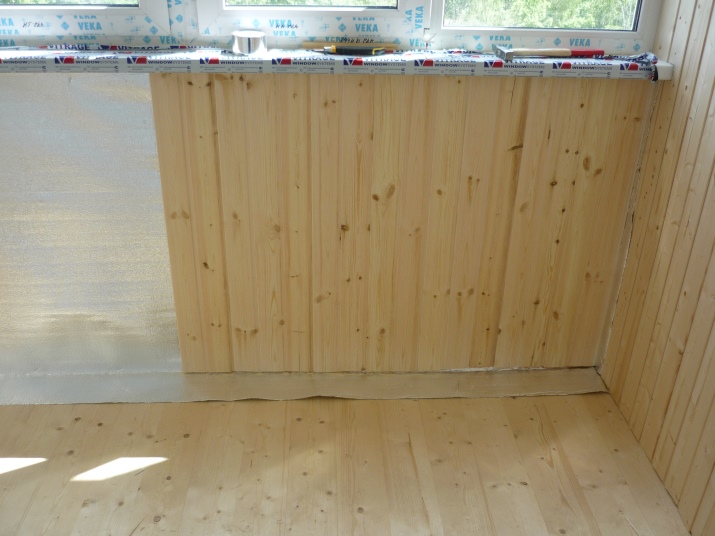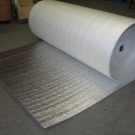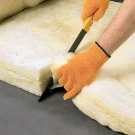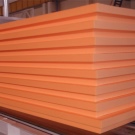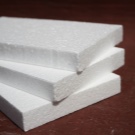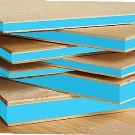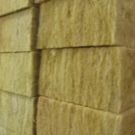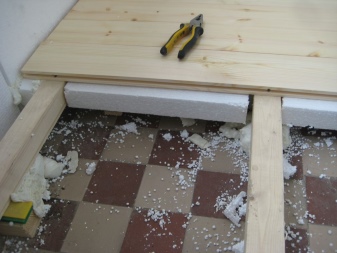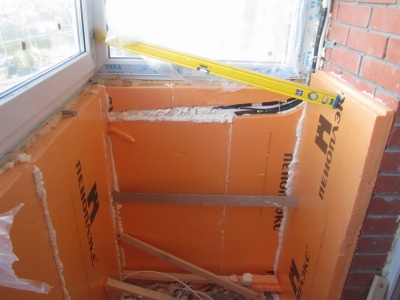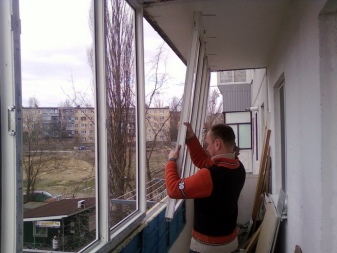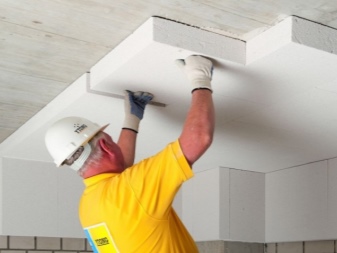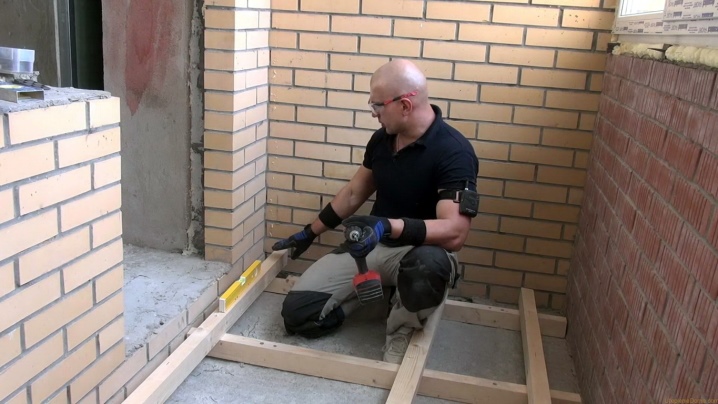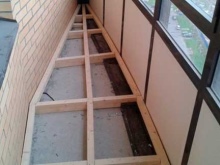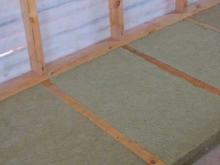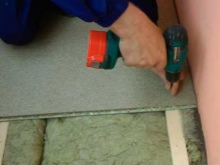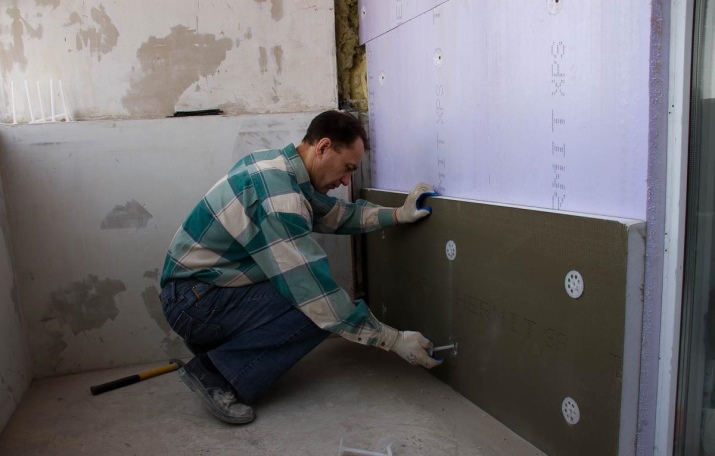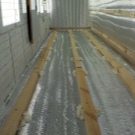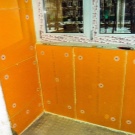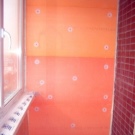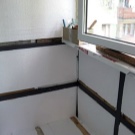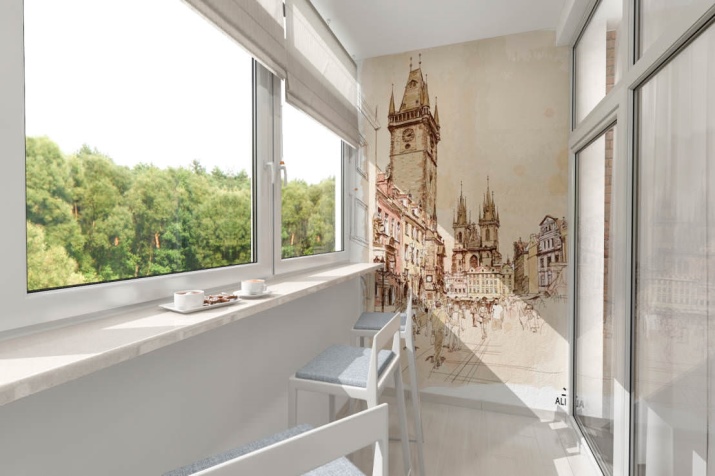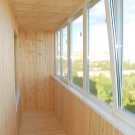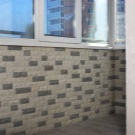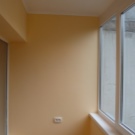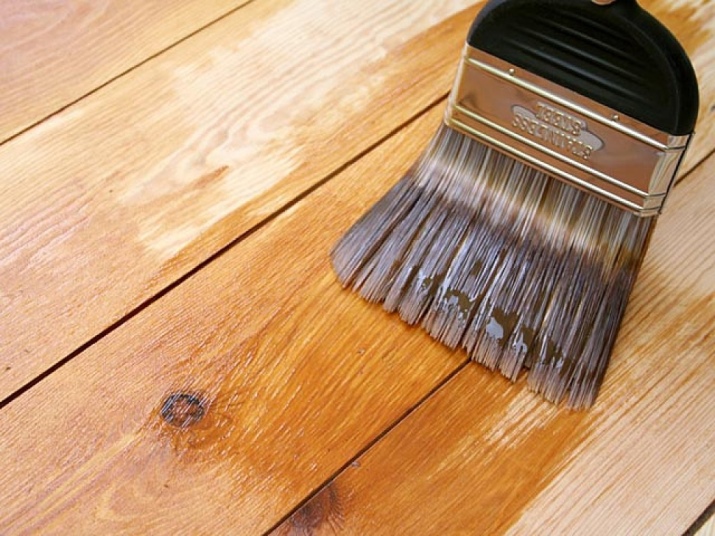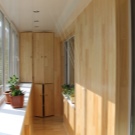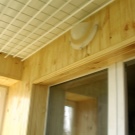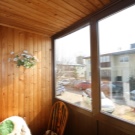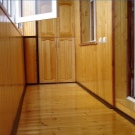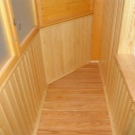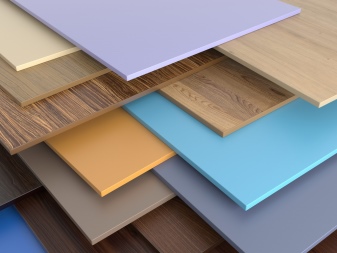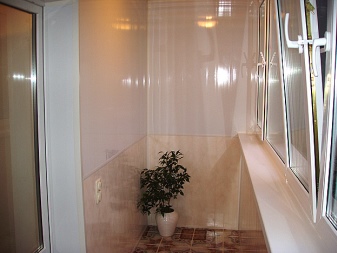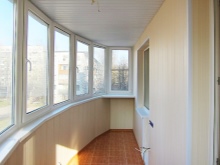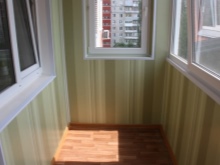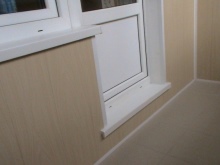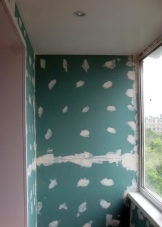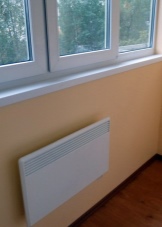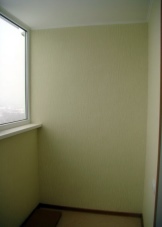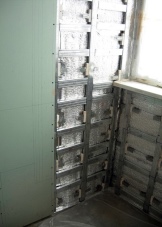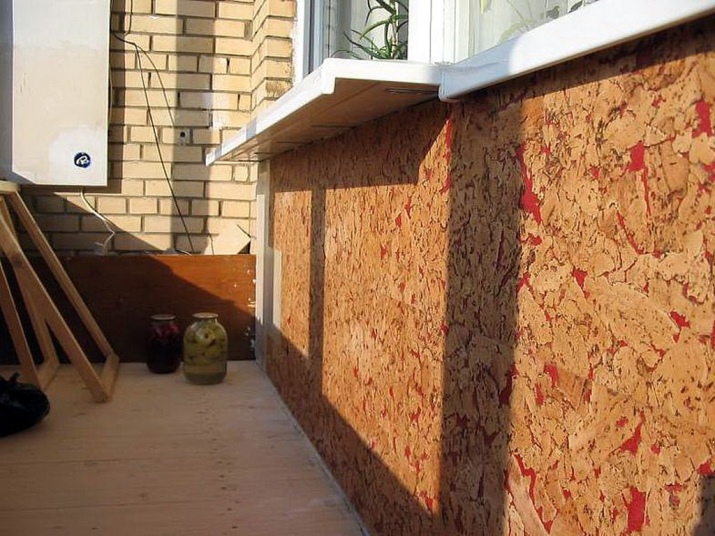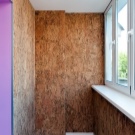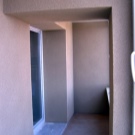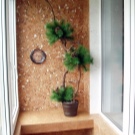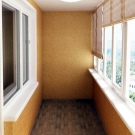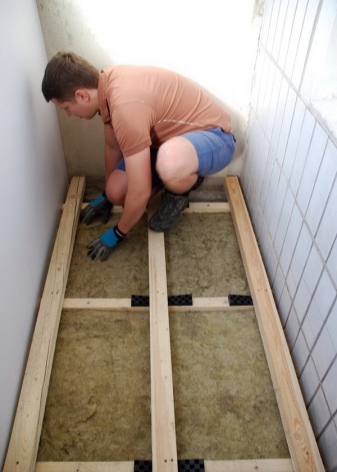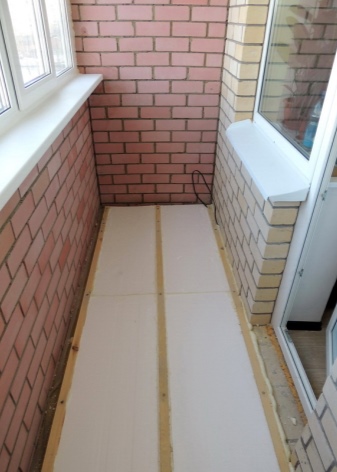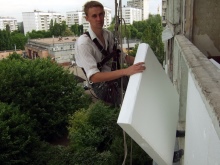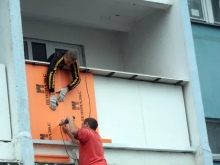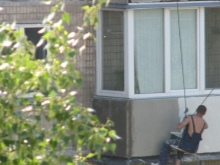How to insulate a balcony?
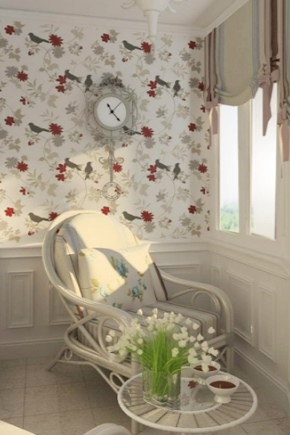
Summer is not coming to an end, but there is little time left to warm the balcony and solve other related problems. If someone decided to improve their living conditions, we must begin to work.
Special features
Many of the owners of apartments with balconies want to connect them with a room or with a kitchen. This is quite a serious problem, but it can be solved on its own or with the help of experienced craftsmen. In the second case, more financial costs, but in the end you will get the perfect results.
One of the central problems to be solved is how to insulate the balcony. It is necessary to take into account many large and small issues that inevitably arise during redevelopment, even if it is insignificant.
We must clearly imagine how the area of the balcony transformed into a part of a room or kitchen will be used.
Where to warm?
It is necessary to warm the balconies and loggias in those cases if the warm type of balcony in the apartment is chosen, where it was decided to join it to the room or kitchen. Differences in the methods of insulation in a panel house of any number of storeys are few. In the “Khrushchev” open-air balconies are small and not very comfortable for glazing, but the problem is solved, and masters can “revive” the old balcony. There are additional difficulties in glazing, insulation and finishing of balconies on the top floor.
In Stalin-type houses with high ceilings or in apartments of prefabricated houses and "Khrushchev", located on the top floor, it is necessary to solve the problem of glazing and installation of the roof. It should reliably protect the balcony from snow load, rain and other undesirable effects.
Types of balconies
Balconies in appearance, interior layout, functionality, insulation are as diverse as the houses to which they belong. Glazed balcony also has its own varieties.
Elegant balcony around the perimeter and height of the balcony is called French. Such balconies are installed in private buildings or special buildings. As a rule, they are not warmed, they serve as an excellent decoration of the house.
Panoramic glazed balconies can be attributed to semi-warm, because a large area of the glazed surface is not able to retain heat. Such balconies, as well as stained glass, serve more aesthetics and design of the house. A warm balcony maintains room temperature, and often such balconies are connected to a room or an apartment’s kitchen.
They have many requirements. They must be kept warm, be rooms for recreation or work and partially or fully fulfill the role of the dining room.
Outwardly, a cold balcony usually looks like a warm one, but there is no heat inside, and therefore its arrangement can be much cheaper than other options. There are also “bay window” type balconies, but they more often perform a decorative role and can increase the illumination of the room to which they are attached.
What materials to use?
Finishing of balconies with their warming should be carried out with the help of such materials in order to withstand temperature changes and the possible penetration and accumulation of moisture for a long time.The resistance of these materials to fading due to the sun's rays is important (when they hit through the glass of a balcony window).
In order to properly insulate a balcony, one must know which parts and from which material should be used in such works.
Here is a sample list of parts on a well-insulated balcony:
- wind moisture protective membrane;
- sexual lag;
- floor insulation;
- heat shield;
- floor dowel;
- laminate flooring;
- finishing panel;
- water outflow;
- frame and window installation profile;
- vapor barrier membrane.
In order for many years to qualitatively warm the balcony, you need to choose insulation that is best suited for a particular category. The safety of heat on the balcony and the price depend on the technological properties, heat resistance. It is possible to choose the heat-insulating material from a number:
- extruded polystyrene foam, foaming polystyrene;
- Styrofoam;
- penoplex;
- foiled polyethylene foam (penofol and ecofol);
- fiberglass;
- mineral wool.
Materials from synthetic resins with fillers are considered the best for thermal insulation of rooms of different profiles and levels. Like all other insulation materials, they must meet certain requirements:
- low thermal conductivity;
- resistance to bacteria;
- high hydrophobicity;
- soundproofing;
- ease of machining.
The best materials that meet these requirements are extruded polystyrene foam and expandable polystyrene in the form of plates, convenient for installation. The thickness of the insulating material depends on the climatic conditions, the area of the balcony, the selected floor option. It is appropriate to recall that the installation of all parts for thermal insulation is carried out after the installation of the frame and the bases for the windows.
Before starting work on the weatherization of a balcony, double-glazed windows are removed and inserted back after finishing finishing all surfaces. For the bases and window frames use a different aluminum profile.
How to make yourself?
If the owner of the house is to some extent familiar with the construction and repair business and has already held the minimum set of tools in his hands, having got acquainted in general with the order of work and having estimated his financial capabilities, you can start working with your own hands.
A good option would be to work with a friend or with an experienced neighbor - the owner of a warmed balcony.
Best of all, when all the work will be done by the masters, but this is not a very budget option. In most cases, the work is still done independently. If there is a good step-by-step instruction, all materials are calculated and procured, then all that remains is to correctly carry out all the steps of repair and insulation of the balcony. So, we need to carry out the insulation of the balcony, bearing in mind that they have just finished the glazing of our object. About double-glazed windows have already been said.
Inside
It is necessary to determine the basic material for thermal insulation. Cheaper option - mineral wool. She has many positive qualities, but she draws moisture to herself. It is better to spend a little money and buy foam plates or extrusive polystyrene foam (EPS). Let's start with floor insulation:
- Preparing surfaces for floor insulation work. It is necessary to seal the gaps in the concrete, all the joints with the slabs and the wall with foam.
- Mark the floor for fixing the grill. The pitch inside the grid should be about 10 mm longer than the width of the insulation plate.
- Lay the bars 4x4 cm or the thickness of the insulation.The outer bars set, retreating from the wall at 50-100 mm.
- Lay in the crate plates or sheets of insulation, gluing them to the floor with liquid nails or special glue.
- Foil to the foam to lay foiled penofol or ekofol.
- Using self-tapping screws, attach plywood or chipboard sheets (20 mm thick) to the bars.
- Cover the floor with a finishing finish (linoleum or ceramic tiles according to a special technology).
We offer to look at video instructing on warming of a floor of balconies below.
The walls of the balcony should be insulated using the same technology. It is only necessary to take into account the types of the location of the walls and glazing. Procedure:
- Start with sealing all the cracks.
- Mark the attachment points of the crates.
- We attach 4x4 blocks (or others, depending on the thickness of the insulation sheets) to the wall at distances similar to floor insulation.
- Glue foam sheets with liquid nails.
- Pour all the cracks with foam and glue with mounting tape.
- On top of the insulation lay foiled penofol, foil into the balcony. Joints are also taped.
- On top of the foil layer, mount another crate for fixing the finish.
- Apply a finish.
We offer for viewing step-by-step instructions on the professional weatherization of balconies.
You can make the finish from the inside using various materials for covering the entire surface. Each type of material requires work on a particular technology. You can choose the material from a number of:
- various plastic panels;
- ceramic, tiled, glazed glossy and matte tiles;
- drywall (as a basis for further processing);
- decorative types of stones;
- plaster for painting;
- lining from different grades of a tree.
A little about the trim. More often than others, wooden clapboard and plastic panels are used as plating, as a result, the inner surface of the balcony takes on a pleasant appearance, pleasing the eye. These materials are resistant to various influences, they are waterproof.
Plastic panels are not afraid of temperature extremes, decay. Installation of such panels is simple, it turns out the surface without seams, which is easy to clean and wash. Lining - the most environmentally friendly plating, therefore, demanded by most balcony owners.
The best lining is from series A, it has a beautiful texture and a polished surface.
Now they have started to use drywall for plating. I must say that it can only be used in warm balconies. We'll have to putty, and then paint or paste wallpaper, but then everything pays off with a great design.
If you have sufficient funds, then cork panels are perfect for covering. Installation of such panels is also simple. They are resistant to temperature extremes, do not fade in the sun, withstand any humidity, do not let in odors, are not afraid of mold and fungi.
When warming had to raise the floor a little. When the ceiling is insulated, the total volume of the balcony will decrease. This should not bother - on the contrary, more heat will remain. If this is not the last floor, then your ceiling is the floor of the balcony of a neighbor living above you, and it is important to ask if the object is insulated. You may have to limit the sealing of the gaps and the finishing of your ceiling. In other cases, you should start the weatherization by following the step-by-step instructions, which differs little from the previous ones.
A special feature can only be mounting insulation with special parts.Another feature of the work will be the installation of a visor on the balcony of the last floor, for this you need to get acquainted with the technology outlined in a special article.
Outside
Typical mistakes
- To begin work, without having studied to the end all the necessary recommendations and advice of experienced craftsmen.
- The transition to other stages of work, without waiting for the fixing of materials, solutions, adhesives.
- The use of low-quality and defective materials, loss of quality when cheaper.
- Work without a certain stock of materials, a waste of time to acquire the missing. The stock of material should be 5-10% higher than estimated.
- The number and functionality of the tool does not ensure the performance of all types of work.
The work is not recommended to do their own hands, if the balcony is located above the first floor. Such work is carried out by special teams - with full implementation of safety measures. Only they can repair and insulate the roof and wall outside.
Successfully avoiding all the mistakes and gaining a good experience, you end up with a warm, beautiful and cozy balcony.
